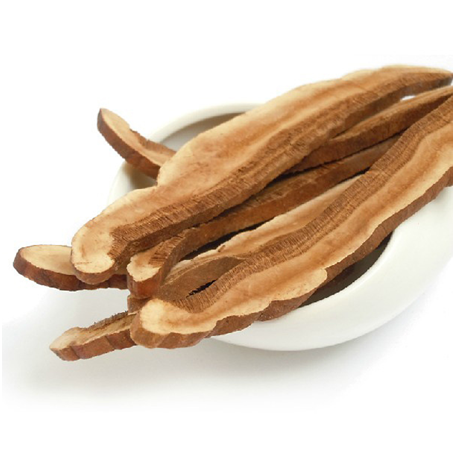Peanut Covering High-yield Cultivation Techniques in Dryland
First, the cultivation and cultivation of peanuts covered with dryland cultivation and development in the dryland are fast growing, and the growth volume is large. The demand for fertilizer and water is higher. Therefore, it is better to choose a deep plowed layer, fertile soil, loose texture, water retention, fertilizer conservation, and sandy soil or loam with strong air permeability. The plots should be ploughed deeply, carefully, and strictly prohibited.
Second, the selection of seeds and seed processing medium-mature grain type Baisha 1016, flower 37, Luhua 3 and so on. Plug before shelling in the sun for 3-4 days to increase seed vigor. In combination with shelling, a first-level seed with full grain, bright skin, strong germination potential and high germination rate was selected. The selected seeds were immersed in warm water at 25°C for 4 hours, and then put into a pot and covered with a damp cloth to induce germination in the room.
Third, the deep application of chemical fertilizers, sitting on water to protect seedlings when using fertilizer one-time deep application technology. In other words, the nitrogen fertilizer needed for the whole growth period of the peanut coating is applied one time before the sowing of the film (a shelling). Improve chemical fertilizer utilization and increase production. Five-furrow trenching for fertilization:
1. Fertilization. In the pre-made 50cm wide bed in the middle of the first ditch, ditch depth of 20cm is better, and then the nitrogen fertilizer (urea per mu 10kg or long-term ammonium bicarbonate 20kg) even point into the ditch.
2. Apply fertilizer. Phosphorus and potash fertilizers are mainly used. The ditch is ditched on both sides of the nitrogen fertilizer ditch. After plowing, the DAP is 15 kg per mu, the potassium sulfate is 10 kg, and the farmyard fertilizer is 2000 kg.
3. The dry land uses water to keep water and sprinkle water. The amount of water per acre is about 3000kg, which is based on the pouring bottom.
4. Make a bed. In the application of phosphorus, potash ridge outside the ridge, and then manually made the bed, the width of 50cm, height 15cm.
Fourth, rational close planting, population increase and the implementation of a reasonable group structure is an important part of the high yield of dryland peanuts covered with plastic film. This is the density, that is, to give full play to the potential for individual production, but also have a reasonable group structure. In the dry land, the seedlings are planted after the first sowing, which is beneficial to preserve the whole seedlings. Agricultural film selection width 85cm, spacing 30cm, membrane spacing 50cm (vacant line), 17cm spacing, 2 seeds per hole sowing, 8824 points per mu protection, 17,468 strains.
Fifth, timely sowing, to ensure the quality of operations in dryland peanut filming sowing time to consider three factors: 1. Local frost period; 2. The number of days from seeding to emergence; 3. The minimum temperature needed to germinate peanut seeds. The medium-mature and large-grained variety requires that the soil temperature at a depth of 5 cm is stable at more than 12°C. Acres seedlings select shelled seeds 16kg. Chemical weeding: acre 150g acetochlor, 40kg water evenly sprayed bed, and then covered.
Seeding film quality requirements: to achieve a smooth bed, vertical bedside, consistent broadcast depth, uniform covering, tight membrane, every 2m horizontal pressure a soil zone, to achieve fieldwork standardization requirements.
Sixth, strengthen field management
1. Timely release seedlings. When the top of the peanut sprouts can be opened film hole seedlings, Fangmiao promptly sealed with wet soil put seedlings hole.
2. Check seedlings to replant. Combination of seedlings, seedlings, seedlings, and seedlings in a timely manner.
3. Prevent pests and diseases. Control of leaf spot with 400 times carbendazim, after the emergence of flowering spray once.
4. Control locusts and red spiders spray with 1000 times Dimethoate solution.
5. Timely harvest, remove residual film. Agricultural Technology Promotion Station of Aohan Banner, Inner Mongolia Liu Xianzhi Ni Xianming Liu Xianzhou
Reishi Raw Material
Reishi Raw Material covers Reishi Slice , Reishi Extract, Reishi Mushroom and Plant Extract etc.
Organic Reishi slices are chopped from the fresh well-selected log-cultivated organic Ganoderma lucidum fruiting bodies, with high content of spores. The well-chopped slices can be directly used in making Ganoderma Tea, cooking soup and brewing wine. It's a perfect choice to keep daily health and present as a gift.

The Reishi extract is made of the fine powder, ground from the globally certified organic ganoderma lucidum, rich in the active ingredients, like dietary fibers, ganoderma polysaccharides, triterpenoid ganoderma acid and protein.
Reishi Raw Material,Nature Reishi Raw Material,Organic Reishi Raw Materials,Raw Materials Herbal Reishi
Ganoherb International Inc , http://www.ganoherb.com